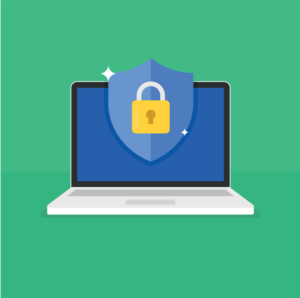News


News
Keeping Your Computer Microphone and Camera Secure

Do you know what’s in your pocket? Or in your office, or on your bedside table? Connectivity is amazing… but it also has the potential to facilitate unwanted monitoring if you’re not careful. Unfortunately, cybercrime is on the rise, and it’s not just limited to mega-corporations. It can happen to almost anyone, using a variety of methods.
Understanding Cybersecurity Risks
Believe it or not, your computer microphone and camera may be picking up more than you think. Cybercriminals can infiltrate your devices by tricking you into downloading malware, meaning they can also access your camera and microphone without you realizing it.
But that’s not the only way an outsider could tap into your devices. Your computer’s built-in camera and microphone were designed to enable remote access—either by you, the owner, or the manufacturer of the server. This remote access is facilitated by something called port forwarding or Peer to Peer (P2P) networking. Port forwarding makes your camera accessible through its external router, while with P2P networking, your device communicates directly with the provider’s server network for easy sharing and collaboration.
While tools like P2P networking and port forwarding were created as useful tools, they have unfortunately become technical back doors that savvy hackers can abuse for their own gain. Once a hacker is able to intercept and access these networking structures, your devices are vulnerable to remote access trojans—aptly nicknamed ‘RATs.’
Protecting Yourself from Cybercriminals
The idea of a stranger watching you through your electronic devices is a scary one. The fact that infiltration can be nearly imperceptible and that a hacker can have complete control over your devices with minimal effort makes it all the more frightening. Your privacy is precious, and the thought of someone intruding on you without your knowledge can feel violating.
While webcam and microphone hacking are worthy of legitimate concern, there are fortunately simple ways to protect the security of your devices and, in particular, your computer camera and microphone.
Cover It Up
It turns out that covering your webcam with tape isn’t just for tin-hatted conspiracy theorists. In fact, both Mark Zuckerburg and former FBI director James Comey both cover their webcams for a bit of added security.
If you have an external webcam, simply unplug it when not in use. If you have an integrated webcam, covering it with a piece of frosted tape or a sticky tab will do the trick, though you run the risk of leaving a bit of sticky residue on the lens. You can also buy cheap but effective sliding webcam covers on Amazon.
Lock It Down
It’s always a good idea to have anti-malware software. A robust security suite includes tools like antivirus, anti-spyware, and a firewall, among other things. If you’re concerned about webcam hacking, there is software available that also includes webcam detection.
You should also keep your software up to date and use strong passwords on your computer and wireless router to ensure top-notch security. Avoid using the factory setting password when possible.
Be Wary
When you get an email or text from an unknown sender, don’t click on unfamiliar links or attachments. Even if you think you’re downloading one thing, it can come with a hidden payload that is actually installing malware on your device. If you think you may have fallen victim to a scam or data breach, connect with the pertinent authorities—the Cybercrimes Unit of the FBI may be able to help.
Cybersecurity may seem scary, but as with anything, it’s all about staying alert and informed. And if you have any questions about keeping your Sacred Wind Communications internet connection secure, you can always reach out to our tech support team. We’re here for you!






